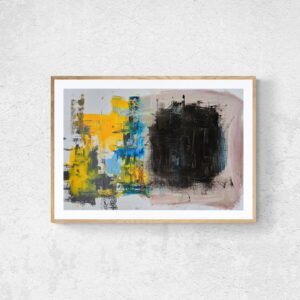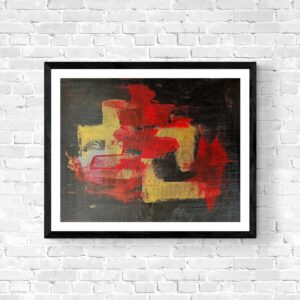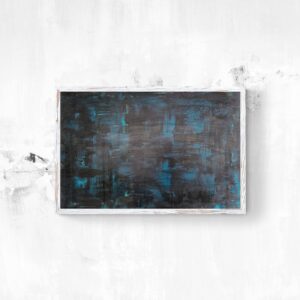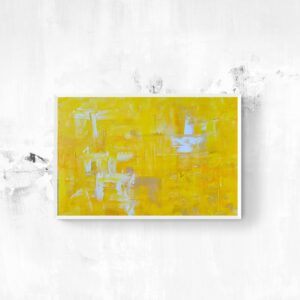

The year 2025 has not been entirely bad for Cuba’s most famous political prisoner, the artist Luis Manuel Otero Alcántara. He won a Vaclav Havel Prize from the Human Rights Foundation in Norway. His artworks are currently featured in Eternal Night, Esthetic Disobedience exhibition of Cuban art at the Clark Center in Montreal, and also in my own exhibition, I Learned to Swim on Dry Land, currently running at the Barcelona Museum of Contemporary Art (MACBA). Nevertheless, July 11 marked his fourth year in a maximum-security prison in Cuba, where he is only allowed to receive monthly visits from his aunt and his son and make brief phone calls twice a week. He says that the sole thing that mitigates living in squalid conditions is knowing that his art is moving through the world, even though he remains unjustly confined. He expects to be released in 2026, as he had been sentenced to five years in prison for allegedly desecrating the Cuban flag in a performance and causing public disorder. Though he remains upbeat during our phone calls, he admits, “It is difficult for me as a suffering prisoner of conscience to feel that I am a pawn in a geopolitical power game.”
Otero Alcántara hoped to get out of prison at the beginning of this year, when the Cuban government announced that it would release 553 prisoners in a gesture ostensibly made to the Vatican that coincided with the easing of US sanctions against the island during the last days of the Biden presidency. Sadly, he was not on the list. Grammy award-winning rapper Maykel Osorbo, currently serving a nine-year sentence, was not on it either. According to Cuban activist Anamely Ramos, who compiles information for the Observatory of Cultural Rights, 18 Cuban artists, writers, and musicians remain in prison, while six more are under house arrest. Dozens of other young artists and writers have either fled, been expelled, or been denied re-entry to Cuba since 2021. Otero Alcántara thinks his government is particularly afraid of artists, especially those associated with the San Isidro Movement, because of their savvy use of social media. “We had a new vision and a new way to catalyze action,” he told me. “We used the internet. Their philosophy is analogical. They are really afraid of digital media because it’s unfamiliar and they don’t have control over it.” The Cuban penal code issued a year after the island-wide uprising in 2021 criminalized the use of social media to organize protests and to spread whatever the government considers “fake news.” In June of this year, the Cuban Prosecutor’s office requested a sentence of 10 years for Alexander Verdecia, an activist who had expressed discontent with the situation in his country on Facebook.
Even before Otero Alcántara was incarcerated, Ministry of Culture officials publicly refused to recognize him as an artist, calling him instead an “intruso,” meaning one who introduces himself without authorization to be in a particular space or to engage in a particular activity. Similarly, Cuban authorities regularly deny that there are political prisoners in the country, referring to those who claim that identity as delinquents or common criminals. Nonetheless, there is a history of Cuba treating its political prisoners like currency to be exchanged for goods and beneficial international agreements. The most famous example of this occurred in 1962 when Fidel Castro exchanged the 1,100 prisoners captured during the failed Bay of Pigs invasion of 1961 for $53 million in baby food and medicine from the Kennedy Administration. Castro also agreed to release 3,600 Cuban political prisoners and send them to the US in 1978 as part of the Carter Administration’s effort to improve relations with Cuba. Jesse Jackson negotiated the release of 27 political prisoners and brought them to the US in 1984, along with 22 Americans who had been in Cuban prisons.

During the Cold War, the US government saw value in rescuing Cuban political prisoners and transferring them to American soil, where they could recount their experiences and thereby counter the favorable vision among progressives of the Cuban revolution as a liberating force. For the Cuban government, sending these prisoners into exile is a convenient way to rid itself of its opposition, and drive home the message to its citizens that there is no room in the revolution for counterrevolutionaries. In the post-Communist era, the Vatican has assumed a central role as an advocate for Cuban political prisoners. In 2010, the Catholic Church and the Spanish government brokered the release of 52 Cuban writers and activists who had been arrested and jailed in the Black Spring of 2003. In 2014, the Pope’s discreet urging led to the rapprochement between the Cuban government and the Obama Administration, but Otero Alcántara points out that there are limits to what the Catholic Church can offer. “Prisoners cannot go live in the Vatican, you understand? So, the Pope has to speak to another country willing to receive them.” He continues with his consideration of the prospects for Cuba’s more than 1,100 political prisoners, 700 of whom were arrested during the 2021 protests. “So, let’s say tomorrow we can leave prison. Where do we go? To the same Cuba, or to a compulsory exile?” he asks. “Do we have to live as exiles or in Cuba under the same pressure I was under before my last arrest, or even more pressure because right now I am a little more well-known and mature, and Cuba is getting worse every day? They are not going to allow me back on the streets, and they can throw me out.”
The 2025 Cuban prisoner release was based on a tenuous agreement and was ultimately disappointing for human rights activists. Most of the released prisoners had not been arrested for political causes, and many had already served their sentences in full. The releases were also conditional, and two well-known activists — José Daniel Ferrer and Felix Navarro — were returned to prison shortly after their release. “This is a crazy country where everything changes overnight, and there is no security whatsoever,” said Otero Alcántara. “We’re in a loop for now. They put us in prison; they release us; they put us in prison again; they release us.”
Since Donald Trump took office in January 2025, his second administration restored Cuba to the list of countries that sponsor terrorism, terminated bilateral negotiations, intensified the embargo, clamped down on humanitarian parole and immigration, and started deporting Cubans, an unprecedented move that shocked many in the exile community. Two exiled San Isidro Movement members, Eliexer Márquez Duany (El Funky) and Oscar Casanella, have been threatened with deportation from the US. The closure of USAID and the State Department’s pro-democracy programs has also resulted in the drastic reduction of funding for independent media and cultural activists, which has impacted Cuban journalists, photo-journalists, artists, and musicians on the island and throughout the diaspora. Concrete support has all but disappeared despite the Trump Administration’s claims that it seeks to foster “a free and democratic Cuba.”
“Right now, it feels like the world has forgotten about us,” says Otero Alcántara.
The artist announced on July 4 that he had started a symbolic 12-hour per day hunger strike for the following week in homage to all the Cubans imprisoned in the wake of the July 11, 2021, protest. With the help of friends, he is also planning to create a new artwork consisting of jars of compote with the faces of Cuban political prisoners currently incarcerated, recalling the era in which their freedom had a price and a buyer. “It is worrisome to feel disadvantaged. They feel unprotected by international institutions and countries that have protected us in the past,” reflects Otero Alcántara. “By not accepting immigrants, the United States and other countries empower dictatorships to act with impunity.”





